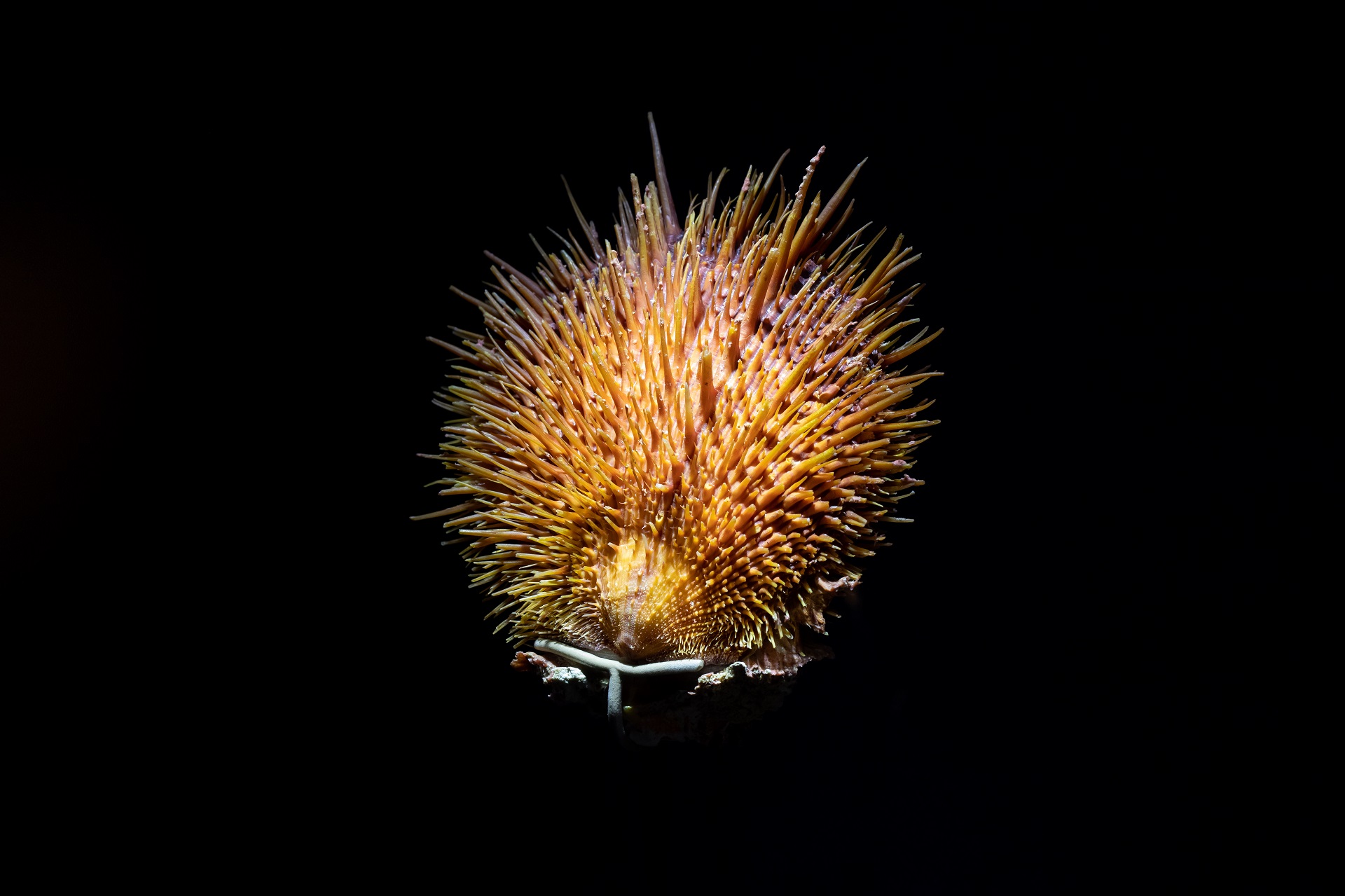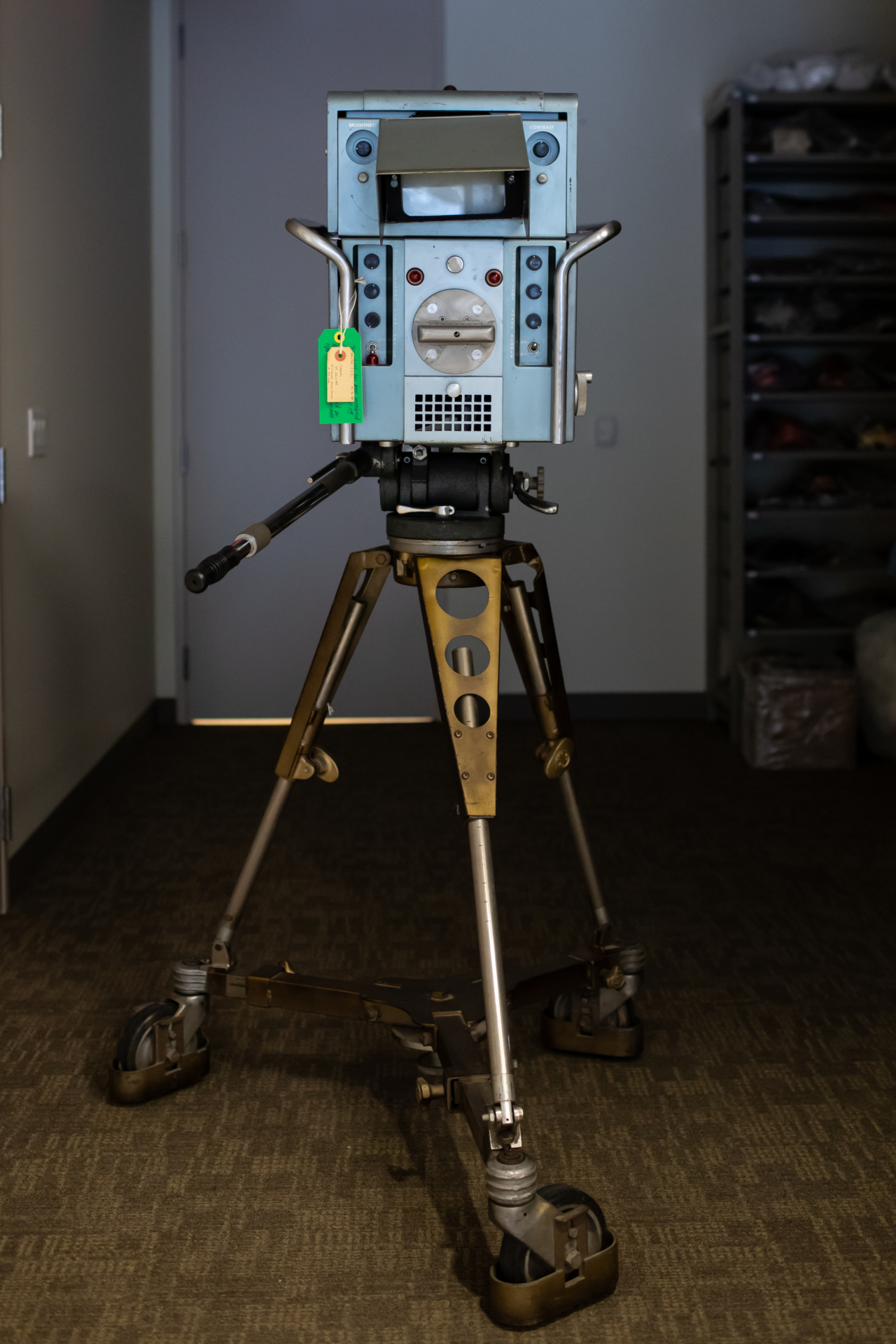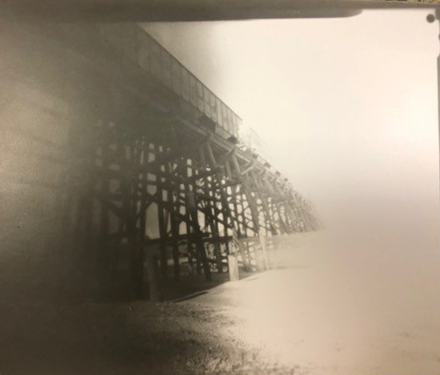Imaging the Codex Xolotl and Mapa Quinatzin at the Bibliothèque National de France, Paris, 14-15 June, 2016
Written by Jerome A. Offner, Ph.D, HMNS Associate Curator, Northern Mesoamerica
On June 14 and 15, Dr. Antonino Cosentino of Cultural Heritage Science Open Source and I were able to carry out technical photography of the Codex Xolotl and Mapa Quinatzin at the Bibliothèque Nationale de France, Paris (BnF). These two documents date to within two or three decades of the Spanish intrusion into Central Mexico in 1519. They are written in the graphic communication system of the Nahua (the principal ethnic group in the Aztec empire) and come from the Aztec “second city,” Texcoco, just to the east of modern Mexico City. The Codex Xolotl is made of native paper and contains 11 painted sides and three fragments that record the history of the region beginning in the 13th century and ending in about 1431, or nearly a century before the Spanish arrived. It is by far the best example of Aztec history, although it also served as a platform for geopolitical, diplomatic and military analysis, and provided moral and practical instruction for people of all ages and classes. In addition, it contains a multitude of stories involving exemplary and non-exemplary people living during that period. It is a true treasure house of Aztec culture. The Mapa Quinatzin is composed of three large sheets of native paper, the first of which recaps the early history of Texcoco. The second contains a detailed rendering of the ruler’s palace in Texcoco showing 14 minor rulers and the councils that administered Texcoco’s small empire. It also contains information on tribute obligations and legal process. The third page continues with a conquest list, but then provides an incomplete list of legal rules and their punishments, along with two cases of judicial corruption that led to the judges’ deaths. Overall, it is one of our best sources on Aztec law. It was probably prepared for European inspection.
Permissions, facilities and staff time were arranged by Laurent Héricher, Chef du service des manuscrits orientaux, Département des Manuscrits of the BnF. This was no easy task and we express our appreciation for the extensive effort and work he put into these arrangements, particularly in the midst of a multiyear renovation of the site Richelieu, where the documents are kept. Loїc Vauzelle, a graduate student at the Sorbonne, travelled from central France at his own expense to assist, and John Hessler, the Kislak Curator of the Library of Congress also happened to be in Paris and provided expert aid and observations as the process went on. In addition, Dr. Marisa Álvarez Icaza Longoria of UNAM, who was at the BnF traveling on a fellowship, contributed valuable ideas. She had just participated in the Oxford conference “Mesoamerican manuscripts: new scientific approaches and Interpretations,” held 31 May to 2 June, 2016 which included several talks on imaging indigenous Mesoamerican documents.
The project had been scheduled weeks in advance, but emerging problems nearly led to its cancellation. The Seine was at or out of its banks in Paris as part of the worst flooding in decades. The Louvre was moving some of its holdings out of danger. Certain sites of the BnF were closed. France was also hosting the 2016 UEFA European Football (Soccer) Championship and Air France pilots began a strike on the day before my flight from Houston to Paris. Nevertheless, we were able to complete the project and Paris began to resemble its familiar beautiful self at just about that same time.

Seine receding from flooding at Île de la Cité, 16 June, 2016

Notre Dame, in evening light, June 16, 2016, as the skies began to clear
At the BnF, site Richlieu, we were provided with a meeting room with two windows that we were able to cover with two layers of black plastic bags secured by green painter’s tape. For others who may be faced with a similar situation, it is worth noting that not one but two layers of these already two sided bags were needed to block the summer light sufficiently. Also, the BnF was happy to see that the painter’s tape left no marks on their walls upon removal. The meeting room door turned out to be light proof around its edges and needed no special attention. The room had only a standard meeting table, the height of which unfortunately could not be adjusted.
We were able to capture four types of technical images for these Aztec pictorial documents. Antonino Cosentino used a modified full spectrum Nikon D800 digital camera, sensitive to the spectral range 360-1100 nm, along with different lighting sources and filters to obtain images that we can designate in this way:
VIS (visible)
IR (infrared)
UVF (ultraviolet fluorescence)
UVR (reflected ultraviolet)
Because of the table height, we had to shoot at an angle, but Antonino made the best of this by making the IR images do double duty also as RAK images.

Preparing to acquire images from Codex Xolotl X.020

Dr. Cosentino focusing in on Codex Xolotl X.050 and X.060
Technical photography documentation of the manuscripts.
What do these designations for types of photography mean, and how are the images described by them acquired?
VIS is used here for light in the visible spectrum, or the portion of the electromagnetic spectrum that is visible to the human eye. A typical human eye will respond to wavelengths from about 390 to 700 nm. In the procedure used for the documents, light, provided by fluorescent tubes, reflected off the surface of the document and passed through an X-Nite CC 1 filter which blocked infrared wavelengths before entering the lens and camera. The filtered light was then captured by the 36 megapixel CMOS sensor in the Nikon camera.
IR is the designation used here for infrared photography. In this case, a Heliopan RG 1000 filter was placed over the camera lens to block visible light while allowing infrared radiation into the camera. (Remember here that infrared radiation has longer wavelengths than visible light, while ultraviolet radiation has shorter wavelengths). As mentioned, these IR images also served as RAK images, meaning that the document pages were illuminated by an infrared source at an oblique angle. Although the angle we used was only slight, the images captured provide a great deal of information on the surface topography and relief of document pages.
UVF imaging picks up visible light emission excited by a UV source (UV-LED) that is used to illuminate the document. As the surface is illuminated, certain materials fluoresce—that is, the material absorbs some of the UV radiation that falls on it and emits visible light. The photons which are then emitted from the document have longer wavelengths that fall into the normal visible light spectrum. Not all materials fluoresce so this method can be a valuable tool for distinguishing materials, and for seeing certain materials more clearly, such as European iron-gall ink glosses (see below). For UVF, two filters are placed in front of the camera—the X-Nite CC 1 filter mentioned above, and a Baader UV/IR filter. These filters work together to create a spectrum window that allows just the visible wavelengths produced by the UV-induced fluorescence into the camera, while blocking wavelengths of light outside the visible spectrum.
UVR (reflected UV) imaging is simpler. The document is illuminated with UV light and the camera records the reflected light through another spectrum window created by the X-Nite CC 1 filter and a B+W 403 filter which allows UV waves into the camera. UVR photography is also another helpful tool for assessing surface topography and roughness.
The images are taken sequentially without moving the document and can therefore be assembled into spectral cubes in Photoshop through the use of layers. Using features of this program, and harnessing the human eye’s exquisite sensitivity to detecting change, the various layers can be compared using a method not unlike the blink comparator that was used by Clyde Tombaugh to discover the dwarf planet Pluto in 1930.

The filter set used for the examination of the manuscripts.
Understanding how the images are acquired helps us understand what we are seeing but also helps us develop methods to uncover or clarify details in these nearly five hundred year old manuscripts. Examining the surface of the images is also not unlike examining the images sent back by NASA planetary probes. Below, the ice rafts on Jupiter’s moon Europa are seen side by side with rafts of “plaster” (gypsum, chalk, we still need to characterize this material) from the surface of the Mapa Quinatzin. Many, but not all, Aztec manuscripts were painted after a layer of “plaster” had been applied on top of indigenous amatl (amate) paper.
 The filter set used for the examination of the manuscripts. spacecraft on February 20, 1997, from a distance of 5,340 kilometers. Image Credit: NASA/JPL/ASU
|
 Mapa Quinatzin, leaf 2, upper margin |
We need to examine our images as carefully as NASA, JPL, and ASU examine their images, bearing in mind that it is considerably easier to acquire new images of the Mapa Quinatzin than of Europa.
In our case, let’s compare the VIS image with the IR, UVF and UVR images.

In this example, the damaged plaster fragments are seen well in VIS and UVR, while the IR image more accurately depicts the folding and flexing of the supporting indigenous amatl paper, and the UVR images shows mostly disturbance in the underlying amatl paper.
Every landscape we encounter in the two documents that we imaged has the potential to teach us something new. For example, a detail from Mapa Quinatzin, leaf 3 helps us read the alphabetic gloss in European ink better than it has been read for centuries. Indigenous ink, composed of carbon black, is far more durable and less damaging to indigenous documents. The often corrosive European iron-gall ink happens to absorb UV radiation and so UVF can be a useful tool for reading alphabetic glosses on these documents because of the contrast with the support (amatl paper) that is generally brighter (because it fluoresces). This section of the manuscript (below) was unfortunately trimmed during its long history and the meaning of this particular scene, showing a man conversing with someone in a building, along with a man punished by strangling, has remained obscure.
Mapa Quinatzin leaf 3 records a few Aztec legal rules along with cases of judicial corruption and their punishment. It is not just a list of rules but instead a fragmentary statement of precontact Aztec Texcocan jurisprudential thought. Such jurisprudential thought continued well after contact, and involved such issues as how Aztec legal process should be conducted and how certain cases with certain details should be decided and punished. Aztec jurisprudence was the product of sophisticated schools of thought over many years.

In this set of images of a small part of Mapa Quinatzin, leaf 3, the UVF image is improved and rendered legible by the fluorescing of the support (the amatl paper) in contrast to the dark European iron-gall ink in the gloss. The Nahuatl text in alphabetic form that is revealed, of course, explains only a tiny portion of the meaning of the images: the indigenous Nahuatl graphic communication system was capable of communicating far more than mere alphabetic text could in a given amount of space. Nevertheless, what little the alphabetic gloss says helps us correlate the image with other lengthier dependent alphabetic texts, especially those of the expert early ethnographer and historian Ixtlilxochitl (1975), and yields enough information to change our understanding of the structuring of the indigenous content of Mapa Quinatzin leaf 3 and of Aztec jurisprudence as a whole.
The landscape provided by the new images is not as large as Jupiter’s moon Europa, but it is a significant undiscovered country that will provide many more surprises as it is examined. What was unknown proves again to be only temporarily hidden, and more things that remain unknown will hopefully be revealed through these images or through carefully designed new images and imaging techniques.
More about Jerome A. Offner, Ph.D, Associate Curator, Northern Mesoamerica
Jerome A. (Jerry) Offner began working as a volunteer with the museum in 1984 and curated two exhibits on aspects of the Americas in the 1980s. Jerry is an expert on the Aztecs of Mexico, their history, culture and overall graphic communication system, including their writing system.
In 1983, Jerry “wrote the book” on the Aztec legal system and has continued to conduct research and publish articles through the present day on topics including religion, economics and history. He specializes in the beautiful and colorful “codices” or native pictorial documents from before and after the Conquest in 1519 AD. Currently, he is assembling a team in Europe to investigate the greatest of the Aztec pictorial histories—the Codex Xolotl from the city of Texcoco, which reports on many events of the remarkable life of Nezahualcoyotl who ruled that city 1431-1472 AD. This history, kept in the Bibliothèque Nationale de France in Paris, illustrates in considerable detail more than 260 years of history before 1431 AD on eleven pages and three fragments made of native paper. It records the migrations, invasions, wars, marriages, births, and lives in the histories of the many different peoples who came to be known as the Aztecs in what is now the central part of Mexico.
Jerry is also an expert in contemporary masks and textiles of Mexico, with additional interests in Africa and the ancient Mediterranean. He read, writes or speaks English, Spanish, French, Latin, ancient Greek, and classical Nahuatl, the language of the Nahua (Aztecs) of Mexico.
“Museums are for the adults in children and the children in adults,” says Jerry. “Most of us remember our first visit to a museum and how the entire day seemed to go by in a flash. We also remember our children’s first visits to museums. Museums are essential in providing hands on experience and interaction with actual objects in our increasingly virtual, digital world.
They anchor us to what is real and at the same time provide inspiration for childhood intellectual development as well as lifelong learning.”
Jerry received his B.A. in 1972 from the University of Chicago and his MPhil and PhD from Yale University in 1975 and 1979. He was been awarded grants by the National Science Foundation, the Doherty Foundation, as well as the Fulbright program. His book was awarded the Howard F. Cline Prize in 1985.
He is active in presenting papers at professional meetings, both in English and Spanish Modern Texcocans remain fiercely and justifiably proud of their long history. On September 2, 2016, he will give the “conferencia magistral” within the at the Tercer Coloquio de Historia Regional de Texcoco, in the modern city of Texcoco 2016, within a few hundred meters of the sites of some of the events depicted in the manuscripts included in the blog post. He will be presenting important new findings based on the images newly acquired in Paris.







